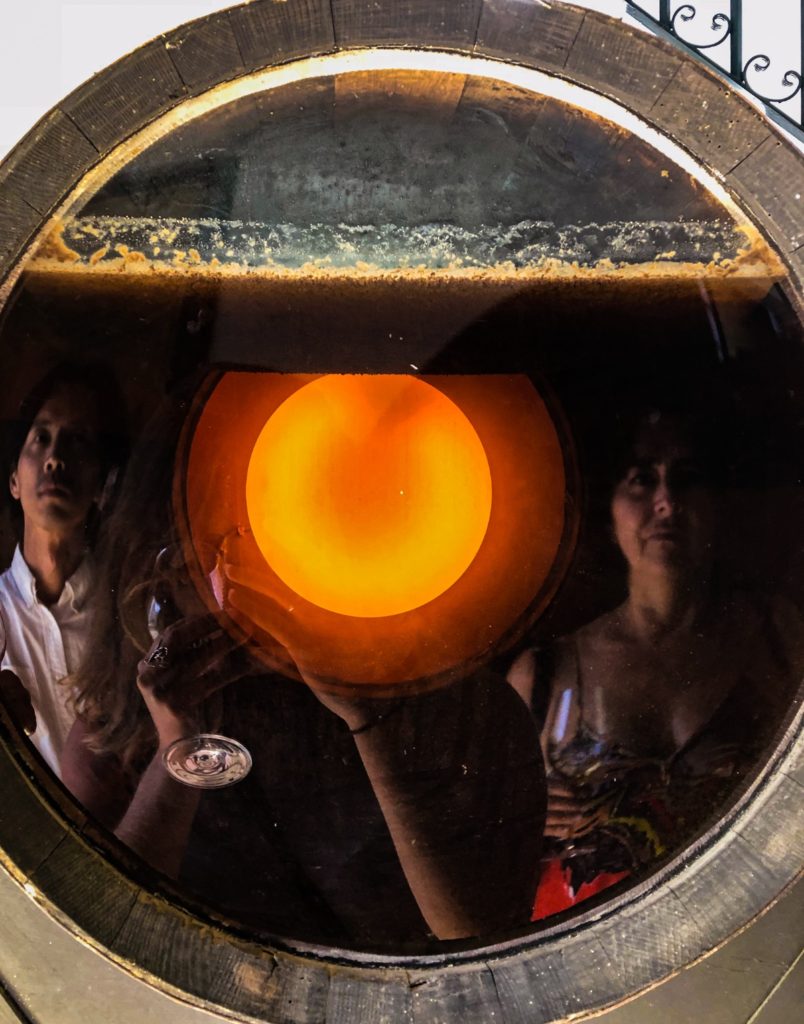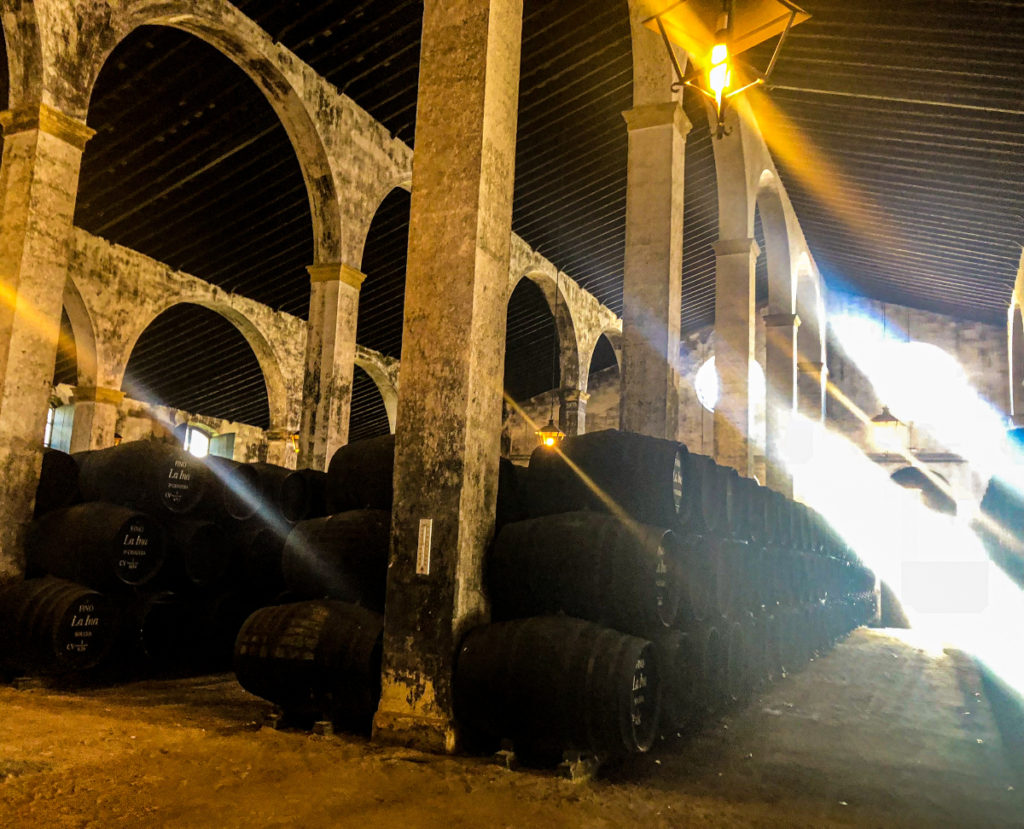Sign Up For My Newsletter
Sign up with your email address to receive a monthly newsletter with exclusive content on all things food and architecture!
This past fall, I had the unforgettable opportunity to roam around Andalusia (or southern Spain) on a work trip with Columbia University’s Historic Preservation Graduate Program. During that time period I had an opportunity to go exploring on my own for a couple of days. I travelled by car to the places I heard were spectacular: Grenada, Rhonda, Zahara de La Sierra, and more. These are surely fairy tale-like destinations that are very much worth a visit.
However, one of the most interesting places during that trip was my visit to Jerez, the heart of sherry country. Upon visiting Jerez, my cab made its way through the deserted streets on route to the bodegas I was eagerly awaiting to visit. It was readily apparent just from gazing upon the deteriorating modern buildings, that this was a struggling city, unlike the other better preserved cities swarmed with tourists. The production history of sherry is fascinating because it has shaped and has been shaped by the economic, social and urban history of the region of Jerez.

Background
Jerez was once a thriving export city. The production of sherry reached about 200 million bottles a year in the 1990s, but now they export barely more than 55 million. Jerez was caught up in a construction boom in the 90s like other European cities. A lot of land previously used for growing grapes was rezoned and used for new construction. The city borrowed more and more money until finally, the bubble burst. All that remains in much of the city are abandoned, half-finished buildings. Many of the central squares are void of people. Sherry productions remains here, although, newer, modern facilities are starting to take a foothold in the outer lying areas of Jerez and the other cities where it is produced.
Sherry can only legally be grown in the “Sherry Triangle,” an area that consists of three cities/towns: Jerez, Sanlúcar de Barrameda, and El Puerto de Santa Maria. This was news to me as well, for all I knew about sherry was the Taylor dry sherry that my mother always added to her Lobster Newburg. Boy was I in for a treat! I realized the lack of awareness of Americans in general regarding sherry. I was surprised that more people did not know how amazing and complex sherry could be, regarding its diverse pairings with foods, as well as its production process. The Spanish of course, know this very well. When paired correctly, sherry is the perfect accompaniment to any dish.
Process
The reason I am so excited to share this information about sherry, is because its production process is so unique to that of a normal wine. The surrounding environment, including architectural design of the bodega is pivotal to the fermentation process. The traditional wine production process as we all know consists of producers of wine who grow their own grapes (ideally) and then age the wine in wine cellars. However, this is not the most practical for the climate where sherry is produced. Bodegas, sherry production buildings, generally do not grow their own grapes. Instead, bodegas in the city purchase grapes from farms and then produce the sherry at the Bodega. Jerez is just 53 meters above sea level, and sherry needs more air for production than a cellar could provide.
The typology of the architecture of the different bodegas is varied, ranging from historic structures to new, modern buildings. Many bodegas were built in a cathedral style architecture suitable for sherry production. One of the most important factors in sherry production is the fermentation process. The flor, or the layer of yeast that sits on top of the developing wine in the barrel, protects the wine from oxidation. Barrels are only filled to 4/5 of their capacity so that the flor can develop on the wines surface. Because the barrels are open to the air, the quality of the sherry is dependent upon the environment that surrounds it!
Sherry that is produced closer to the sea, for example, has a fresh, sea-like minerality to it, as compared with sherry produced near Jerez which is nuttier in flavor. The second major step is fortification, where the wine is fortified with rectified wine alcohol. The barrels are constantly rotated to regularly add new wine supplements. They keep track of the rotation with chalk on the barrels. There is much more to learn on the specifics of the process which are pivotal to understanding how sherry is made, but for the purpose of this article, I am mostly concerned about the architecture’s effect on the oxidation process.

Architecture
The cathedrals’ height and volume are extremely important, because these building structures reduce the temperature at ground level, where the barrels of sherry are stored. This is important in the dryer, hotter months. The high windows, similar to the clerestory in a classic cathedral, also create a natural ventilation system. They are high enough where they can regulate humidity by evacuating rising air and blowing in moist winds from the west. The floor is made of dirt, allowing the producers to spray it down with water to increase the humidity in the building when it gets too hot.
The location of these bodegas are equally influential. Most bodegas are located in the urban areas, closest to the sea. They are also set on a north/south axis so that sun exposure is minimized and west winds are maximized. Other methods include the use of white paint to reflect sunlight, the use of hygrophilous materials that transfer humidity from the ground, and thick external walls.

Future
Today, modern bodegas often are located on the outskirts of town where they combine all methods of production into one: admin offices, production rooms and warehouses. This raises many concerns relating to authenticity, character and identity. Will the production of sherry still hold the same importance to the local community if it is made in new, modern spaces? Even if the new sherry is climate controlled, and a better product, does this outweigh the negative impacts of not producing it like it has been for hundreds of years? In addition, how will this affect the urban landscape? These were centers of urban areas. As new, modern bodegas are created on the outskirts, what will this mean for the economy and urban fabric at the city center? As in all things, time will tell.
Sign up with your email address to receive a monthly newsletter with exclusive content on all things food and architecture!